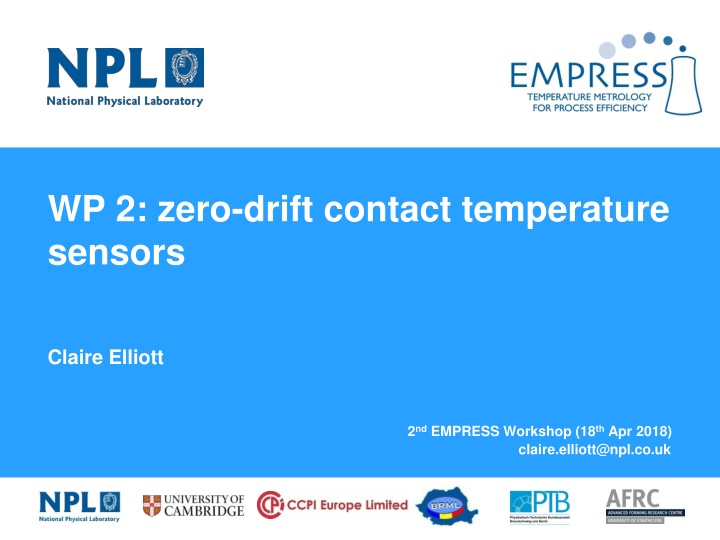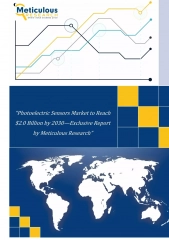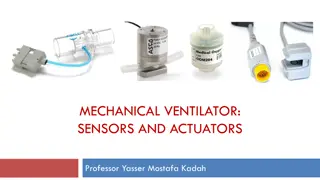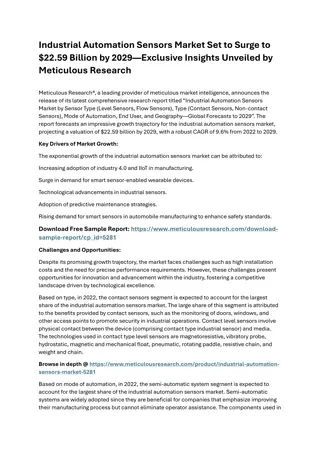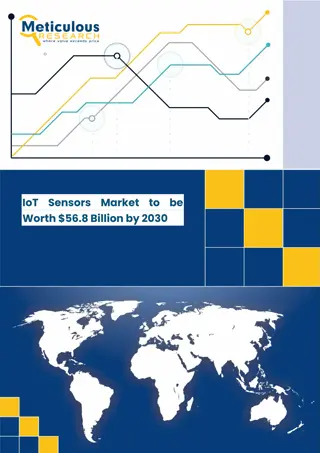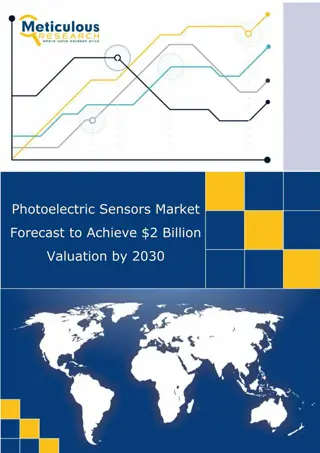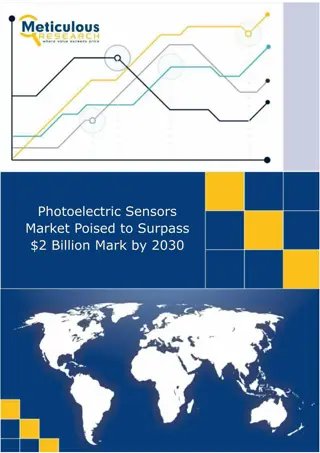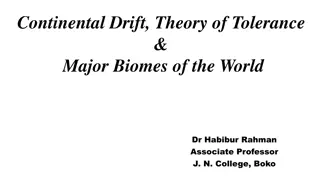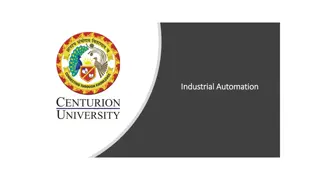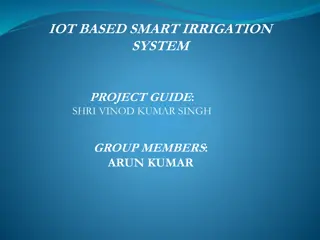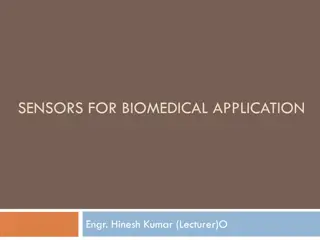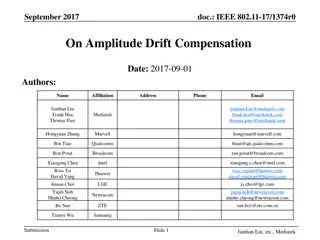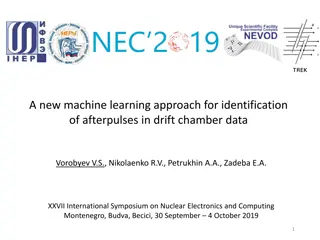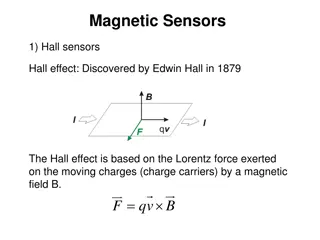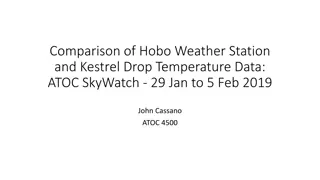Development of Zero-Drift Contact Temperature Sensors for Industrial Use
Claire Elliott presented on the tasks undertaken in the EMPRESS project's WP2, focusing on the design, testing, and validation of integrated self-validating thermocouples and ultra-stable MIMS thermocouples for industrial applications. The development of a new design that addresses fragility and intrusiveness issues, as well as successful prototyping and testing of these sensors, marked significant progress in the field of temperature measurement technology.
Download Presentation

Please find below an Image/Link to download the presentation.
The content on the website is provided AS IS for your information and personal use only. It may not be sold, licensed, or shared on other websites without obtaining consent from the author.If you encounter any issues during the download, it is possible that the publisher has removed the file from their server.
You are allowed to download the files provided on this website for personal or commercial use, subject to the condition that they are used lawfully. All files are the property of their respective owners.
The content on the website is provided AS IS for your information and personal use only. It may not be sold, licensed, or shared on other websites without obtaining consent from the author.
E N D
Presentation Transcript
WP 2: zero-drift contact temperature sensors Claire Elliott 2ndEMPRESS Workshop (18thApr 2018) claire.elliott@npl.co.uk
Talk overview Our tasks in EMPRESS (WP2) Before EMPRESS Integrated self-validating thermocouples (with 7mm OD) Ultra-stable MIMS thermocouples Industrial trials Summary
EMPRESS WP2 Our tasks: To design, test & trial integrated self-validating thermocouples to be suitable for industrial use (i.e. same shape, size as standard) To test & validate ultra-stable MIMS thermocouples with the 2-layer sheath design in industrially relevant (simulated) conditions Demonstrate both in real industrial conditions
Before EMPRESS Integrated self-validating (inseva) thermocouples had been shown to work (by various groups), but were generally intrusive and fragile.
Before EMPRESS Integrated self-validating (inseva) thermocouples had been shown to work (by various groups), but were generally intrusive and fragile. The 2-layer sheath (double wall) design of MIMS thermocouples had been developed but not optimised for operation up to 1350 C Double wall Thermocouple wires Double wall
Inseva thermocouple NPL, with the assistance of CCPI Europe, have successfully developed a design which can be used with: Type S thermocouple wires (and in principle others too) 7 mm OD alumina sheath pure-metal temperature-reference ingots e.g. Cu (1084 C) eutectic (high temperature) reference ingots e.g. Co-C (1324 C) and Ni-C (1329 C)
Inseva thermocouple Tasks complete: 4.0 Prototypes designed, built and tested (4 mm x 16 mm) 16.0
Inseva thermocouple Tasks complete: 4.0 Prototypes designed, built and tested (4 mm x 16 mm) 16.0 1 oC Cu Cu 10 min
Inseva thermocouple Tasks complete: 4.0 Prototypes designed, built and tested (4 mm x 16 mm) 16.0 Issues identified (and solutions) 1 oC Furnace Temperature Inseva Temperature 1100 Cu Cu 1050 Temperature / C 1000 950 10 min 900 0 50 100 150 Time / hours
Inseva thermocouple Tasks complete: 4.0 Prototypes designed, built and tested (4 mm x 16 mm) 16.0 Issues identified (and solutions) 1 oC Furnace Temperature Inseva Temperature 1100 Cu Cu Improvements made 120 and tested Cu B Cu C Cu D Cu D (with barrier) 1050 Temperature / C 0 80 2 C 40 1000 EMF / V 2 C 950 -40 10 min -80 900 0 50 100 150 Time / hours 1000 -120 0 200 400 600 800 1200 1400 1600 1800 Time / hours
Inseva thermocouple Tasks complete: 4.0 Prototypes designed, built and tested (4 mm x 16 mm) 16.0 Issues identified (and solutions) 1 oC Furnace Temperature Inseva Temperature 1100 Cu Cu Improvements made 120 and tested Cu B Cu C Cu D Cu D (with barrier) 1050 Temperature / C 0 80 2 C 40 1000 EMF / V 2 C 950 -40 10 min -80 900 0 50 100 150 Time / hours 1000 -120 Publications: 0 200 400 600 800 1200 1400 1600 1800 Time / hours Elliott, IJT, 38:141 (2017) Greenen, MSA Conference Proceedings, Queenstown (2015)
Industrial trials Tasks complete: Inseva thermocouples sent to industrial partners
Industrial trials Tasks complete: Inseva thermocouples sent to industrial partners Both tested the Cu (1084 C) inseva thermocouple
Industrial trials Tasks complete: Inseva thermocouples sent to industrial partners Both tested the Cu (1084 C) inseva thermocouple Dec 2016 Oct 2017 Mar 2017 Oct 2017 5386 h 377 h 33 melting plateaus observed 2 melting plateaus observed Drift: up to 30 V from calibration value Drift: up to 40 V from cal. value
Industrial trials 1100 Furnace Inseva 1095 1090 Temperature / oC 1085 1080 1075 1070 1065 0 03:00 Time / minutes:seconds 06:00 09:00
Industrial trials 1100 Furnace Inseva 1095 1090 Temperature / oC 1085 1080 1075 1070 1065 0 03:00 Time / minutes:seconds 06:00 09:00 Neither thermocouple differed by more than 5 V (<0.5 C) upon recalibration
Industrial trials 1100 Furnace Inseva Heating elements changed 1095 1090 Temperature / oC 1085 1080 1075 1070 1065 0 03:00 Time / minutes:seconds 06:00 09:00 Calibrations at NPL Neither thermocouple differed by more than 5 V (<0.5 C) upon recalibration
Testing Ni-C As we had issues early on with the Co-C thermocouple, tests using Ni-C were started. Ni-C (1329 C) has been found to be more robust than Co-C (1324 C) Ni-C A Ni-C B 0 2 C -20 EMF / V -40 -60 -80 0 200 400 600 800 1000 1200 1400 1600 1800 Time / Hours
Double wall MIMS University of Cambridge, with the assistance of PTB, have begun evaluating MIMS (double wall) thermocouples Type K (4.5 mm OD) - optimised for use at 1350 C Lab tests, using industrially relevant thermal cycle Revealed issues with batch 1.
Double wall MIMS University of Cambridge, with the assistance of PTB, have begun evaluating MIMS (double wall) thermocouples Type K (4.5 mm OD) - optimised for use at 1350 C Lab tests, using industrially relevant thermal cycle Revealed issues with batch 1. Plan B: Type N (3.0 mm OD) - optimised for use at 1200 C Lab tests, using industrially relevant thermal cycle
Double wall MIMS N @ 1200 C Tasks complete: New lab facility installed
Double wall MIMS N @ 1200 C Tasks complete: New lab facility installed Industrially-relevant cyclic testing
Double wall MIMS N @ 1200 C Tasks complete: New lab facility installed Industrially-relevant cyclic testing
Industrial trials N @ 1200 C Tasks complete: Short term test in vacuum furnace at AFRC Tests at Bodycote UK in vacuum furnaces at 1200 C In-house tests started in October/November 2017 Installation at Bodycote ongoing
Industrial trials N @ 1200 C Tasks complete: Short term test in vacuum furnace at AFRC Tests at Bodycote UK in vacuum furnaces at 1200 C In-house tests started in October/November 2017 Installation at Bodycote ongoing Type K (Batch 2) - Thermal cycle tests have been started (Mar 2018)
Industrial trials N @ 1200 C Tasks complete: Short term test in vacuum furnace at AFRC Tests at Bodycote UK in vacuum furnaces at 1200 C In-house tests started in October/November 2017 Installation at Bodycote ongoing Type K (Batch 2) - Thermal cycle tests have been started (Mar 2018) Unfortunately the results are not quite analysed yet
Summary Designed and tested integrated self- validating thermocouples
Summary Designed and tested integrated self- validating thermocouples 120 Cu B Cu C Cu D Cu D (with barrier) 80 40 EMF / V 2 C 0 -40 -80 -120 0 200 400 600 800 1000 1200 1400 1600 1800 Time / hours
Summary Designed and tested integrated self- validating thermocouples 120 Cu B Cu C Cu D Cu D (with barrier) 80 40 EMF / V 2 C Tested & Validated (some) ultra-stable 0 -40 double walled MIMS thermocouples -80 -120 0 200 400 600 800 1000 1200 1400 1600 1800 Time / hours
Summary Designed and tested integrated self- validating thermocouples 120 Cu B Cu C Cu D Cu D (with barrier) 80 40 EMF / V 2 C Tested & Validated (some) ultra-stable 0 -40 double walled MIMS thermocouples -80 -120 0 200 400 600 800 1000 1200 1400 1600 1800 Time / hours
Summary Designed and tested integrated self- validating thermocouples 120 Cu B Cu C Cu D Cu D (with barrier) 80 40 EMF / V 2 C Tested & Validated (some) ultra-stable 0 -40 double walled MIMS thermocouples -80 -120 0 200 400 600 800 1000 1200 1400 1600 1800 Time / hours Tested both in real industrial conditions
Thank you The National Physical Laboratory is operated by NPL Management Ltd, a wholly-owned company of the Department for Business, Energy and Industrial Strategy (BEIS).
